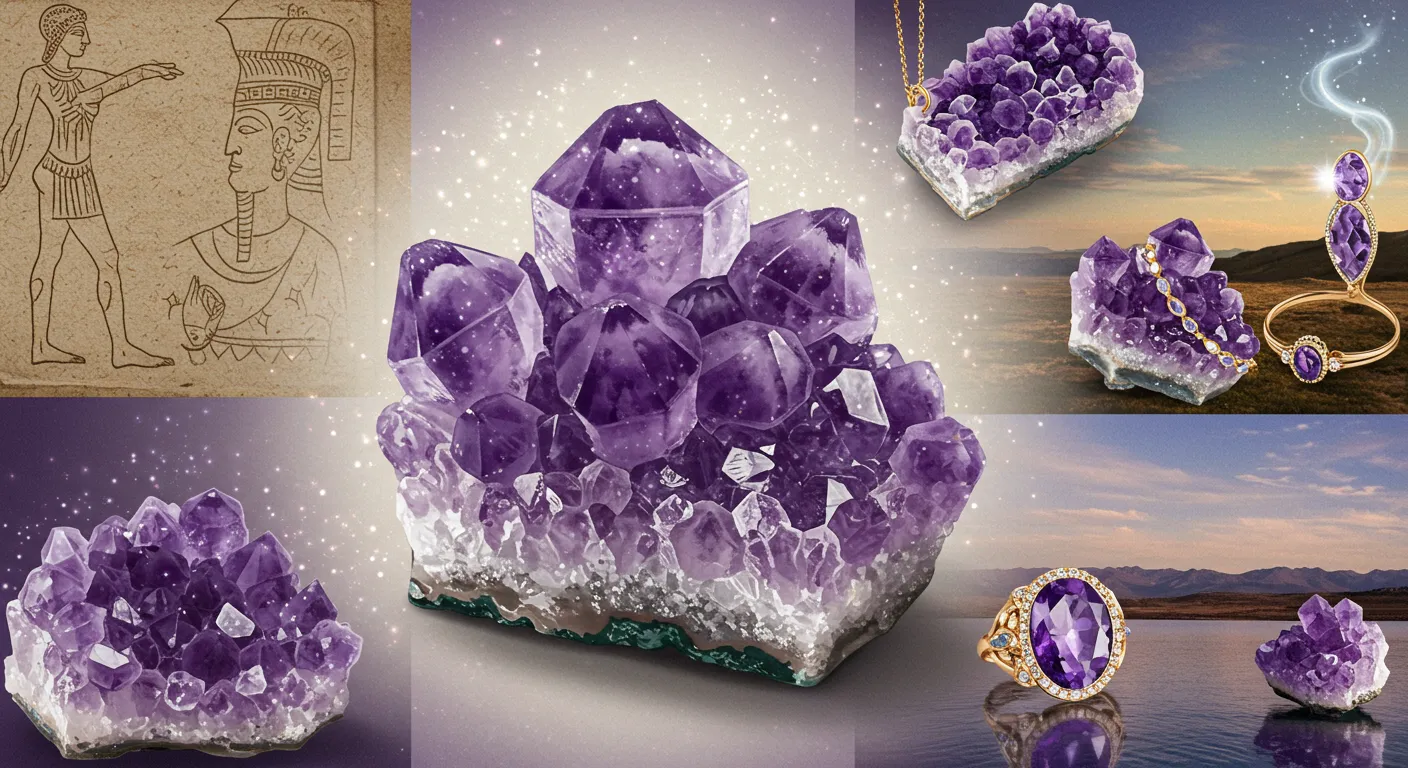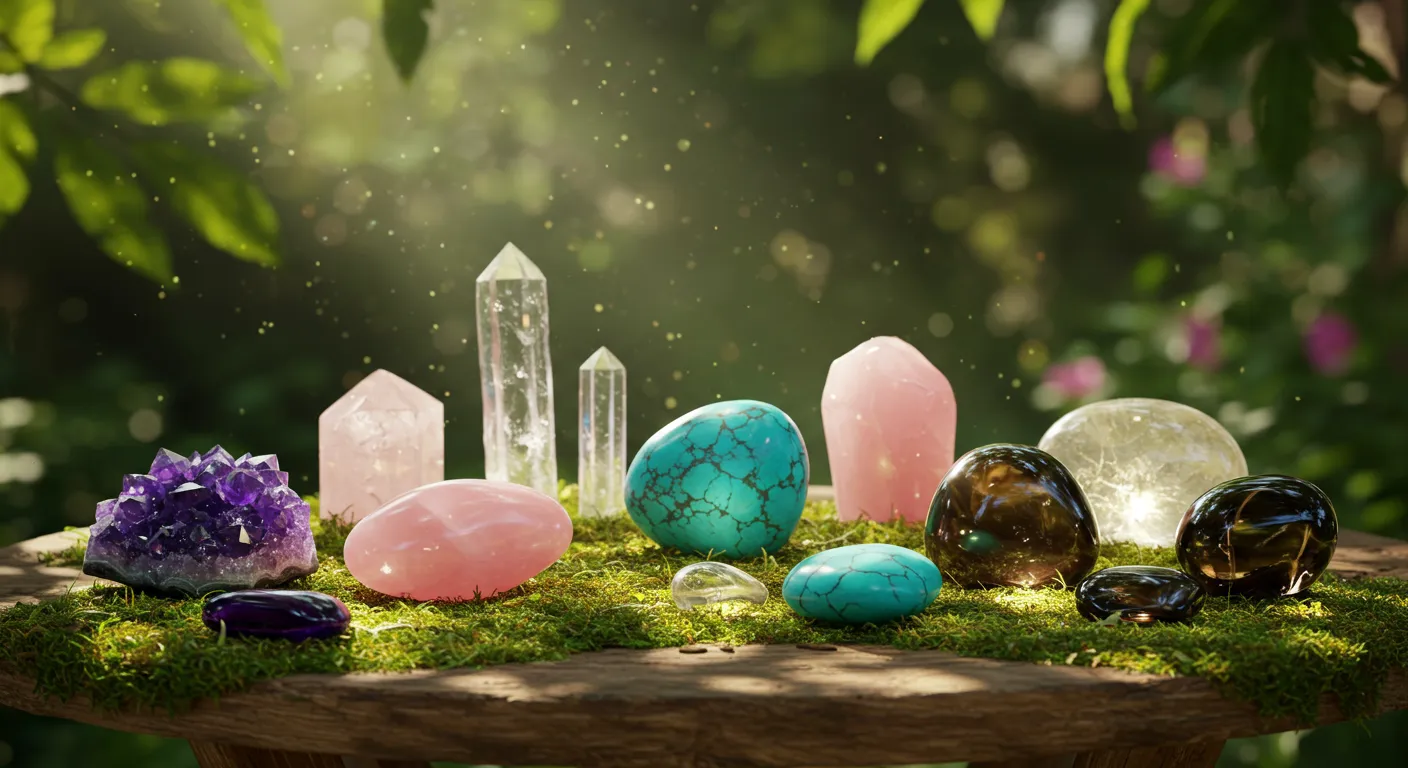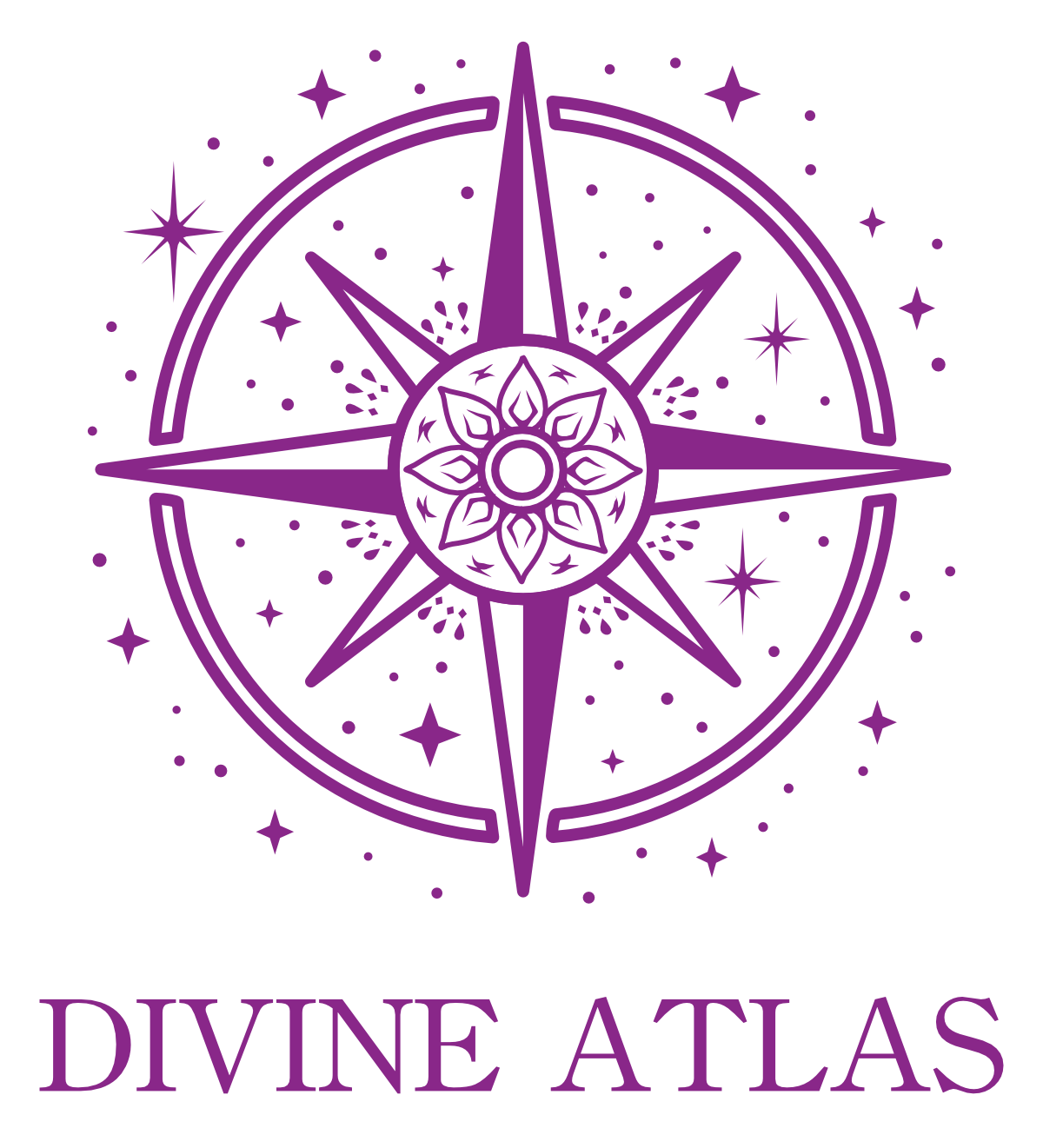Amethyst’s Stunning Reputation: More Than Just Pretty Purple
If you’ve ever wandered into a crystal shop, you know the drill: amethyst is everywhere. It’s the purple stone that seems to glow from every velvet pouch, every glass case, every Instagram feed. But amethyst’s reputation goes way deeper than just being “pretty purple.” It’s a wild story, honestly—one that stretches from ancient priestesses to my aunt’s living room, and even (awkwardly) to my grandma’s jewelry box.
Let’s start with the amethyst stone meaning. Ancient Egyptians treasured amethyst for its beauty and believed it protected them in both life and death. Fast forward to ancient Greece, and the story gets even more interesting. The Greeks were convinced that amethyst could prevent drunkenness. (Imagine that: a stone that lets you party without the hangover.) They’d carve goblets from it and wear amethyst jewelry at feasts, hoping to stay clear-headed. In medieval Europe, bishops wore amethyst rings, believing in its power to ward off evil and help them focus during long, complicated sermons.
But my first real encounter with amethyst wasn’t in a dusty history book or a trendy wellness store. It was in my Great Grandma Violet’s ring—a chunky, violet stone set in gold, glinting in her jewelry box. I definitely wasn’t supposed to touch it, but I did anyway. (Sorry, Grandma.) I remember slipping it on and feeling like I was wearing a piece of magic. Turns out, I wasn’t alone. Amethyst is a family heirloom in so many households, passed down for generations, carrying stories and secrets along with its sparkle.
Here’s the thing: if healing crystals had a “celebrity influencer,” amethyst would be it. Amethyst Metaphysical Properties are everywhere—on blogs, in memes, on TikTok. Some say it calms anxiety, others swear it helps them sleep, and a few even claim it boosts their immune system. The amethyst healing properties legend has only grown, even though research shows there’s no scientific proof behind these claims. Still, the belief is powerful. As Dr. Serena Weldon, a cultural historian, puts it:
‘Amethyst draws its power as much from belief as it does from the Earth.’
What’s wild is how amethyst stone meaning has evolved online. You’ll find everything from serious guides to hilarious memes, and—let’s be real—a fair bit of misinformation. But that hasn’t stopped amethyst from stealing the spotlight in alternative medicine. Maybe it’s the color, maybe it’s the lore, or maybe it’s just that we all want a little cosmic calm in our pockets.
Quick tangent: amethyst’s journey is literally epic. Born in volcanic rocks, it travels from deep inside the Earth to end up in velvet pouches, on bedside tables, and in family rings. Over 2,500 years of history, and still, amethyst’s reputation glows—fueled by tradition, pop culture, and a dash of mystery.

Physical Healing Properties: Hype, Hope, or Healing?
Let’s explore the Physical Healing Properties of amethyst. If you’ve ever wandered through a crystal shop or scrolled wellness Instagram, you’ve probably seen the bold claims: amethyst can help with pain relief, boost your immune system, regulate hormones, and even detox your body. Sounds almost too good to be true, right? That’s because, well, it might be.
What Sources Claim: The Big Promises
According to crystal enthusiasts and alternative wellness circles, the Amethyst Healing Properties list reads like a wish list for anyone who’s ever had a bad headache or a stressful week. Some of the most popular Benefits of Amethyst Crystals include:
- Pain Relief Uses—especially for headaches and migraines
- Immune system support (think fewer colds, more energy)
- Hormone regulation, particularly for women
- Improved circulation and detoxification
But here’s the catch: most of these benefits are anecdotal. People swear by them, but there’s no scientific consensus backing them up. Still, the stories are everywhere.
My Experiment: Amethyst Under My Pillow
Curiosity got the best of me. I decided to try sleeping with an amethyst crystal under my pillow for a week. I’ve struggled with tension headaches for years, and honestly, I was ready to try anything short of wearing a tinfoil hat. Did my headaches disappear? Not exactly. But I did notice a subtle sense of calm—maybe it was the crystal, maybe it was the placebo effect, or maybe I just slept better knowing I was doing something new for myself. You decide.
Notable Claims: Circulation, Detox, and More
Some sources go even further, suggesting that amethyst can help with circulation and detoxification. There are amethyst-infused water bottles, jewelry, and even wellness mats. But before you toss out your doctor or your daily vitamins, remember: there’s zero conclusive evidence supporting these physical healing claims. As of 2024, no clinical trials have confirmed any health effects from amethyst crystals.
Wild Card: Amethyst as a Wearable ‘Health Battery’?
Imagine if amethyst became the next big thing at CES—a wearable ‘health battery’ that claims to recharge your body. Would it catch on? Maybe. The wellness world loves a good gadget, especially if it promises cosmic calm. But for now, amethyst’s power remains firmly in the realm of belief and experience, not science.
Comparing Gemstone Therapies: Amethyst vs. Jade and Quartz
Is amethyst really better than jade or quartz for physical wellness? The jury’s out. Each stone has its own set of fans and supposed benefits, but again, the evidence is mostly stories and personal experiences. Amethyst might be the most famous, but it’s not the only contender in the gemstone healing game.
Expert Counterpoint: What the Science Says
‘If a stone brings you comfort, that’s real enough for me.’ — Dr. Nadia LeBlanc, integrative therapist
Research shows that while users report reduced headaches and improved sleep, the data is anecdotal. No clinical trials confirm the Physical Healing Properties of amethyst. Still, the comfort and ritual of using crystals can be powerful in their own way.
Emotional Healing Properties: Stones for the Soul
Let’s get personal for a second. A few years ago, I hit a rocky patch—one of those “can’t sleep, can’t think, can’t stop worrying” stretches that seem to sneak up when you least expect them. Out of nowhere, an old lady handed me a small, smooth amethyst worry stone. “For your soul,” she said, with a wink. I was living in Arcata, CA, which is known for its “hippy” community, okay, and “pot culture”. I didn’t know whether to laugh or roll my eyes, but I slipped it into my pocket anyway. And honestly? That little stone became my secret sidekick during some pretty rough days.
Amethyst’s emotional healing properties are legendary in the world of crystals. People rave about its ability to reduce anxiety, promote sleep improvement, and offer a sense of mental clarity enhancement. I’ve seen it pop up in support groups, wellness retreats, and even on the nightstands of friends who swear by its calming effect. The claims are broad—everything from easing depression to helping you make better decisions. (Side note: If you’re struggling, please talk to a certified therapist too. Crystals are cool, but they’re not a substitute for professional help!)
One day, my amethyst worry stone disappeared. Did my mood improve after that? Not exactly. In fact, I felt a little lost without my “magic” rock. Maybe that’s the real trick—sometimes, just believing in something, even a crystal, can give you a tiny boost when you need it most.
People use amethyst for emotional healing in all sorts of creative ways:
- Clutching a stone during meditation or yoga
- Stashing it in a pocket or purse for on-the-go comfort
- Setting up a mini altar at home, complete with candles and calming music
- Slipping it under a pillow to chase away restless nights
But let’s be real: The science behind amethyst’s emotional healing properties is, well, thin. Research shows that while many people report feeling calmer or more focused, there’s no proven mechanism behind the magic. What we do know is that ritual and belief play a huge role. The simple act of holding a stone, setting an intention, or carving out a quiet moment can be powerful—sometimes, that’s all it takes to feel a little lighter.
Online forums are packed with stories of sleep improvement, anxiety relief, and even emotional breakthroughs, all thanks to amethyst. Emotional uses far outpace physical ones in popularity. Maybe it’s the color, the coolness in your palm, or just the idea that you’re doing something for yourself. As wellness coach Maya Linton puts it:
‘Crystals might not cure you, but holding one can feel like a promise things will get better.’
So, whether you’re a skeptic or a true believer, there’s something undeniably comforting about the ritual. Even if the science is still catching up, the spiritual meaning behind amethyst remains thick and vibrant—just like the stories we tell ourselves when we need a little hope.
Amethyst Crystal Uses: Not Just for New Age Altars
If you think amethyst is just for incense-filled altars and moonlit rituals, think again. My friend’s phone, or more specifically, from her phone’s ring holder, which looked like a tiny purple gemstone. At first, I thought it was just a quirky accessory. Turns out, it was a real amethyst, doubling as both a grip and a supposed source of “cosmic calm.” Function meets fashion in the most unexpected places.
That’s the thing about Amethyst Crystal Uses: they’re everywhere, often hiding in plain sight. Over the last five years, crystal-infused products have exploded in popularity. You’ll spot amethyst in everything from water bottles to beauty rollers, and even tucked discreetly into car cup holders. It’s not just about spiritual healing anymore—amethyst has gone mainstream, and it’s as much about personal ritual as it is about prescribed methods. As holistic practitioner Sarah Tang puts it,
‘Amethyst is flexible—there are as many uses as there are users.’
Let’s break down some of the most common (and creative) ways people use amethyst today:
- Meditation: Holding or placing amethyst nearby is said to enhance focus and promote a sense of peace. Some swear by its ability to clear the mind and deepen their practice.
- Jewelry: Amethyst necklaces, rings, and bracelets are everywhere. Wearing the stone is believed to keep its calming energy close, and let’s be honest—it looks good, too.
- Water Bottles: Since around 2018, crystal-infused water bottles have popped up in wellness shops. The idea? Sip on “charged” water for emotional balance. But here’s the catch: there’s no scientific proof that amethyst changes your water, and safety experts warn against submerging raw stones due to potential toxins. Instagram trend or not, maybe just stick to admiring the bottle.
- Home Décor: Amethyst geodes and clusters make stunning centerpieces. Some people place them in bedrooms to encourage restful sleep, or in workspaces for mental clarity.
- Beauty Rollers: Amethyst facial rollers promise to reduce puffiness and boost circulation. Whether it’s the crystal or just the massage, the ritual itself feels soothing.
If I had to describe amethyst, I’d call it the Swiss Army knife of crystals—versatile, but not a miracle. It’s used for everything from stress relief to hormone regulation, and even to strengthen family bonds. But here’s where it gets fun: imagine if amethysts came with a user manual. Page one might read, “No, you don’t have to eat it. Yes, you can put it anywhere you like.”
Honestly, the most effective way to use amethyst is the one that feels right to you. My own “weird ritual” is keeping a small stone on my desk. Does it work? Who knows. But it’s my reminder to pause, breathe, and maybe, just maybe, channel a little cosmic calm into my day.
Alternative Medicine and the Crystal Craze: The Good, The Skeptical, and The Glittery
Let’s be honest—when most people think of alternative medicine, their minds jump straight to acupuncture needles, herbal teas, or maybe a yoga mat in a sunlit studio. But lately, there’s been a new contender sparkling its way into the mainstream: amethyst. Yes, that purple crystal you see in gift shops and Instagram feeds. Amethyst in alternative medicine has become a phenomenon, and I’ve found myself swept up in the glittery current.
To set the scene: amethyst sits comfortably alongside other alternative therapies. You’ll find it on the same shelves as sage bundles and essential oils, promising everything from stress relief to spiritual awakening. Some practitioners recommend amethyst for anxiety, insomnia, or even hormone balance. I’ve met people who swear by its calming energy, placing it under their pillows or clutching it during meditation. It’s wild how a stone can inspire so much hope—and debate.
The Business of Belief: Crystals as Big Business
It’s not just a fringe thing anymore. The crystal wellness industry is booming—worth around $1 billion in 2023 alone. Major conventions attract over 10,000 attendees each year. There are entire brands, boutiques, and even luxury retreats dedicated to crystal healing. I’ve walked into shops where amethyst geodes are displayed like rare art, with price tags to match. There’s a whole economy built on the promise of cosmic calm, and amethyst is at the heart of it.
The Skeptical Side: Science, Placebo, and “Expensive Gravel”
Of course, not everyone is buying in—literally or figuratively. The science-minded crowd is quick to point out that there are no peer-reviewed scientific studies definitively validating the healing claims of amethyst. Some call it the ultimate placebo, others dismiss it as “expensive gravel.” I’ve heard more than one friend roll their eyes at the idea of a rock curing headaches or heartbreak. Research shows there’s no scientific consensus, but that hasn’t slowed the community’s enthusiasm one bit.
Crystal Showdowns: My Workshop Experience
I’ll never forget the time I sat in on a wellness workshop and witnessed a heated debate—amethyst versus rose quartz. Grown adults, passionately defending their favorite stones, citing personal stories and energy readings. It was oddly inspiring, and a little surreal. I realized then that for many, the power of crystals isn’t just about science; it’s about belief, ritual, and community.
Danger or Delight? Navigating the Risks
But here’s where things get tricky. While amethyst in alternative medicine can offer comfort, it’s important not to rely on crystals alone for serious health issues. Even the most devoted crystal educators will tell you: “The healing is in the experience, not the object.” (Thanks, Alina Foster.) Crystals can complement, but never replace, conventional health care.
So, can belief in amethyst coexist with modern medicine? Absolutely. Just remember to keep both feet—well, at least one—firmly on the ground.

Messy Truths & Takeaways: What Amethyst Taught Me (and Might Teach You)
When I first started exploring Amethyst Healing Properties, I’ll admit, I was secretly hoping for a magical transformation. I pictured myself waking up with perfect clarity, stress-free, maybe even glowing a little. But here’s the messy truth: what surprised me most wasn’t the stone itself, but the ritual I built around it. Lighting a candle, holding the amethyst, taking a few deep breaths—these small acts became the real source of calm. It turns out, the Benefits of Amethyst Crystals might have as much to do with intention as with the crystal’s legendary metaphysical properties.
If you’re a skeptic, I get it. There’s no shortage of online debates and family eye rolls about whether Amethyst Metaphysical Properties are real or just wishful thinking. Research shows there’s no scientific proof that amethyst can heal your body or mind. Still, there are countless stories—testimonials from people who swear by its power to ease anxiety, help with sleep, or even soothe migraines. No hard numbers, just a sea of personal experiences. And sometimes, that’s enough to keep the conversation going.
So, what would I tell a skeptic? Don’t expect miracles, but don’t dismiss the power of ritual, either. The act of pausing, setting an intention, and focusing on your well-being can be healing in itself. For the true believers, here’s my gentle warning: don’t put all your hope in a single stone. Healing is rarely that simple. Amethyst can be a beautiful companion on your journey, but it’s not a substitute for medical care or self-reflection.
Honestly, my own journey with amethyst hasn’t been a straight line. There have been moments of doubt—arguments with family members who think crystals are nonsense, late-night scrolling through heated online forums, and times when I wondered if I was just fooling myself. But every time I returned to my little ritual, I felt a bit more grounded. Maybe, as I’ve come to believe, all healing starts with where your heart is.
If I could invent a new amethyst ritual, it would definitely involve a bubble bath, a handful of amethyst stones, and an unapologetically cheesy love stories. Healing doesn’t have to be serious or mystical—it can be fun, playful, and entirely your own.
So, here’s my invitation: try your own experiment. Grab an amethyst, set an intention, and see what happens. Worst case, you end up with a pretty rock. Best case? You discover a new way to care for yourself, even if it’s just a few quiet moments of cosmic calm. As Leah Kim, a counselor, once told me:
‘Whatever heals you, heals you. Just know what that is.’
In the end, the true Benefits of Amethyst Crystals might be less about the stone and more about the space you create for yourself. And that, I’ve learned, is a kind of magic all its own.
TL;DR: Amethyst is famed for its healing powers—but whether you’re a believer, a skeptic, or somewhere in between, its legacy is as much personal as it is mystical. My journey was full of surprises, and yours might be too!
#AmethystHealing #PurpleGemPower #AmethystWisdom #HealingCrystals #VibrantAmethyst #CrystallineCure #AmethystEnergy #SoothingStone #GemstoneTherapy #PurpleHealingMagic












